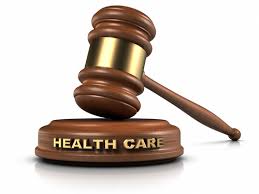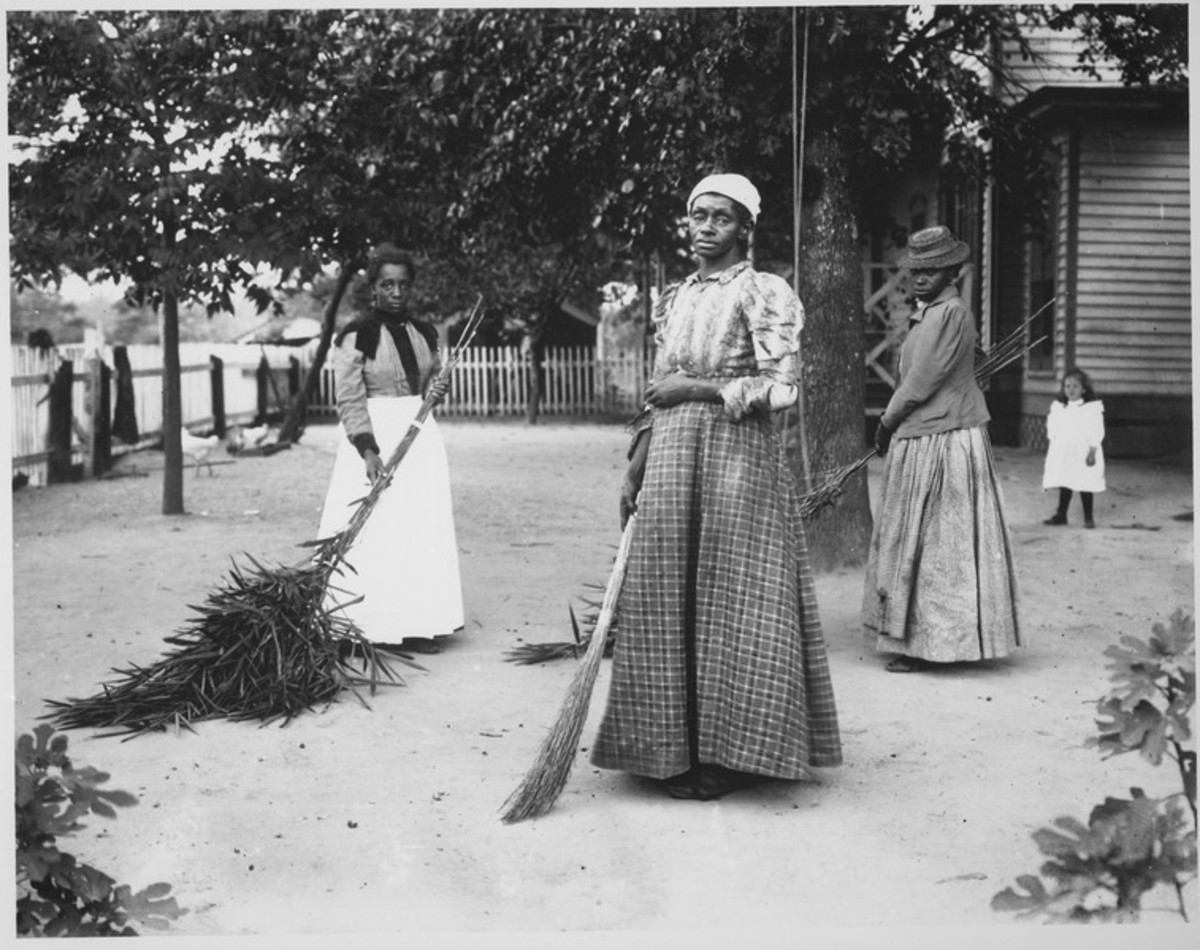The Affordable Care Act: Did It Make a Difference?

Introduction
Much has been said about the Affordable Care Act since its implementation in 2010. The bulk of the argument, however, is political rhetoric with party politics weighing in on both sides. The real issue at hand is not politics. Instead, supporters and detractors must stand back and examine the real reason for overhauling healthcare in America: the need to improve healthcare for all Americans.
Perhaps the best way to ensure the availability of affordable healthcare for all is to examine the need for a healthcare system overhaul from the sociological perspective. As Light (2004) points out, "two great strengths that sociology brings to the policy table, or to any effort at understanding how some aspect of society works, are its analysis of how past structural or organizational forces influence life and of how people or organizations construct their own reality (p. 2)."
Therefore, in order to understand the need for healthcare reform from the sociological perspective, it is important to understand the nature and history of health care and public health.
Hardcastle et al (2011) define the two systems as follows:
healthcare and public health are typically conceptualized as separate, albeit overlapping, systems. Health care’s goal is the improvement of individual patient outcomes through the provision of medical services. In contrast, public health is devoted to improving health outcomes in the population as a whole through health promotion and disease prevention (p. 317).
Through the years, health care evolved into the medical marketplace forcing the arena of public health to become under funded and starved of resources. Hospitals were once charitable institutions caring for the poor, but the years turned these charitable organizations into “centers of surgery and the latest, scientific techniques, wooing the paying middle-class patient” (Light, 2004, p. 9). In the end, health care became a business and, in some ways, a monopoly as an effort to gain control over the practice of medicine in such a way that competition was not eliminated but “rather to keep outsiders like consumers and buyers form setting terms, especially price” (Light, 2004).
At this juncture, access to quality healthcare became a luxury. The right care could be purchased for the right price. The working poor and the impoverished were left to find care in the public health sector since barriers to gainful employment left these individuals without access to insurance. According to Hardcastle et al (2011)
the Patient Protection and Affordable Care Act of 2010 reflects the dominance of health care over public health. As its name suggests, the statue’s primary goal is to improve access to health care services through insurance system reforms (p. 317).
The ACA hopes to accomplish this reform through the creation of insurance exchanges and Medicaid reforms, but will these two reforms be sufficient to breakdown existing barriers to healthcare? Has the ACA begun to satisfy the needs of America’s population? Has the process of health care integration started? Which demographic has received the greater benefit thus far? Does health care discrimination still exist in the United States? To answer these questions, the following hypotheses will be researched:
1. There has been no change in the number of uninsured people in the UnitedState’s population.
2. There has been no change in the number of people enrolled in government healthcare programs.
3. There has been no change in the number of people enrolled in the private healthcare sector.
These hypotheses will be investigated by defining “uninsured population” from the perspectives of such demographics as race, residence, and nativity and income status. Terms like “near poor” and “missing class” also will be identified and defined. Lastly, the barriers currently experienced by these groups will be explored.
Review of the Literature
A review of the literature indicates that health care in America has traditionally been viewed as a benefit whether it is provided by the government or as part of a benefits package through gainful employment. The goal of health care is to improve the quality of life for patients through the provision of medical services (Hardcastle, 2011). Traditionally, affordable healthcare had remained elusive for 32 million uninsured Americans many of whom are racial and ethnic minorities (Hasnain-Wynia, 2012). The Patient Protection and Affordable Care Act (ACA) is a piece of legislation designed to reform health care in the United States through insurance system reforms (Hardcastle, 2011). These reforms will be accomplished through two major avenues—Medicaid expansion and health insurance exchange subsidies (Burkhouser et al, 2013).
Current research indicates that Medicaid expansion is the avenue most likely to bridge the healthcare gap for uninsured racial and ethnic minorities. Under the ACA Medicaid minimum eligibility will be increased to 133 percent of the federal poverty level (Hasnain-Wynia, 2012). According to data provided by The Henry J. Kaiser Family Foundation, 29 states including WashingtonDC have adopted Medicaid Expansion, 7 states have discussed the adoption of Medicaid expansion, and 15 states have decided not to adopt Medicaid expansion at this time (Kaiser, 2015).
Studies suggest that states struggle with this decision at a time when it is difficult to balance budgets because of scarce government funding. In the past, budget deficits were reconciled by cutting Medicaid benefit packages. Since the ACA shifts the power to the states, the strain of extending Medicaid benefits to a wider population will force states to “raise co-payments, mandate more managed care, and reduce provider payments, negatively affecting the availability, scope, and quality of services” (Olsen, 2012). Therefore, state officials must estimate the impact of Medicaid expansion by looking at trends in income and income inequality with their respective states.
In 2013, Burkhauser, Larrimore, and Simon completed a study to measure the valuing health insurance on levels and trends in inequality and how the Affordable Care Act of 2010 could affect them. In this study, the researchers use the 1996-2008 current population survey to measure levels and trends in the household income of all Americans and their type of employer-and-government provided health insurance coverage (Burkhauser et al, 2013). The end result of the study indicated that the benefits of Medicaid expansion and health insurance exchange will go to Americans living in the lowest-income brackets and will, therefore, reduce inequality (2013).
Method
The primary method for examining these hypotheses will be through unobtrusive research using existing statistics. The primary foci of the project will be income data from the Current Population Survey Annual Social and Economic Supplement issued from by the U.S. Census Bureau. Results from the 2012 survey will be compared with the 2013 to ascertain the level of improvements to health care access after full implementation of the Affordable Care Act.
Findings
The Current Population Survey Annual Social and Economic Supplement measures health insurance coverage during the calendar year. According to CPS ASEC private health insurance plans provided through an employer or union, plans purchased by an individual from a private company, military health coverage plans, Medicare, Medicaid, Children’s Health Insurance Program; and individual state plans fall into the category of insured. Therefore, respondents without any form of insurance coverage are considered “uninsured.”
According to the 2013 CPS ASEC, 13.4% or 42 million Americans are uninsured (Smith and Medalia, 2014). This number is down from 15.4% or 48 million Americans in 2012 (DeNavas-Walt, Proctor, Smith, 2013. The uninsured respondents can be broken down into the following demographics: residence, race, nativity, and income status.
In analyzing the 2013 demographics for the uninsured relating to residence, 13.5 % of the uninsured population were lived inside metropolitan statistical areas with 15.7 % of the population living inside principal cities, 12.1 % lived outside principal cities, and 12.9% reported living outside metropolitan statistical areas (Smith and Medalia, 2014). The 2012 demographics relating to residence are as follows: 15.5% of uninsured respondents reported living inside metropolitan statistical areas with 18.6% living inside principal cities, 13.5% living outside principle cities, and 15.2% living outside metropolitan statistical areas (DeNavas-Walt, Proctor, Smith, 2013).
In analyzing the racial demographics for the uninsured from 2013, 12.8% of respondents were White, 9.8% were White not Hispanic, 15.9% were Black, 14.5% were Asian, and 24.3% were Hispanic (Smith and Medalia, 2014). From 2012, 14.7% of respondents were White, 11.1 were White not Hispanic, 19.0% were Black, 15.1% were Asian, and 29.1% were Hispanic (Denavas-Walt, Proctor, Smith 2013).
In analyzing the 2013 nativity demographics for the uninsured, 11.2% were native -born Americans and 27.7 of the respondents reported being of foreign birth. Of the foreign-born respondents, 15.9% reported that they were naturalized citizens while 24.3% reported that they were not citizend of the United States (Smith and Medalia, 2014). In 2012, 13% of respondents were native-born Americans and 32% of the respondents reported being of foreign birth. Of the foreign-born respondents, 18.3% reported that they were naturalized citizens while 43.4% responded that they were not a citizen of the United States (DeNavas-Walt, Proctor, Smith, 2013).
In analyzing the 2013 income demographics for the uninsured, 21.6% of the reporting respondents fell into the less than $25,000 per year category, 18.7% fell into the $25,000 to $49,999 category, 13.1% fell into the $50,000 to $74,999 category, and 21.3% fell into the $75,000 and over category (Smith and Medalia, 2014). In 2012, 24.9% of uninsured respondents fell into the less than $25,000 per year category, 21.4% fell into the $25,000 to $49,999 category, 15% fell into the $50,000 to $74,999 category, and 7.9% fell into the $75,000 and over category (DeNavas-Walt, Proctor, Smith, 2013).
In 2013, 34.3% of insured respondents were enrolled in government health insurance. Government health insurance includes Medicaid, Medicare, TRICARE, CHAMPVA, and care provided by the Department of Veterans Affairs and the Military (Smith and Medalia, 2014). In 2012, 32.6% respondents reported that they were enrolled in government health insurance (DeNavas-Walt, Proctor, and Smith 2013).
In 2013, 64.2% of insured respondents were enrolled in private health insurance programs or programs provided through an employer, through a union, or through coverage purchased directly from an insurance company (Smith and Medalia, 2014). In 2012, the number of insured respondents enrolled in private health insurance stood at 63.9% (DeNavas-Walt, Proctor, Smith, 2013).
Analysis
Data analysis proves Hypothesis One to be false. The number of Americans falling into the “uninsured” category decreased in 2013 by 6 million. However, economic status continues to be the major factor affecting insurability among Americans. The benchmark for the Affordable Care Act is the federal poverty line. According to DeNavis-Walt, et al,
Poverty status is determined by comparing annual income to a set of dollar values called poverty thresholds that vary by family size, number of children, and the age of the householder. If a family’s before-tax money income is less than the dollar value of their threshold, then that family and every individual in it are considered to be in poverty. For people not living in families, poverty status is determined by comparing the individual’s income to his or her poverty threshold (DeNavas-Walt, Proctor, and Smith 2013).
In 2013, 48.8 million people had income below their respective poverty level. Bishaw and Fantenot (2014) report that this is the second consecutive year without a statistically significant change in the poverty rate (p. 1).” While many individuals beneath the federal poverty line qualify for government insurance, there is a group of people called the “near poor” that falls into a new social class labeled by some researchers as the “missing class.”
Newman (2007) defines the “missing class” as the “near poor whose income places them above the poverty line, but well below the middle class (p. 1).” The near poor consist of families with two parents and two children with income of $20,000 to $40,000 per year. This level of earnings excludes the near poor from government assistance thus explaining the reason why the bulk of the uninsured population consists of near-poor Americans (Newman, 2007).
Sadly, the group known as the near poor is the one at greatest risk for medical ailments and chronic illness. Many individuals work for employers with little-to-no insurance coverage. Chronic illness when it strikes forces the adult worker out of the labor market and into poverty (Newman, 2007).
Race, ethnic background, and nativity continue to play a role in access to healthcare for the uninsured. The ACA was created to address the disparities affecting race and ethnic background. The greater percentage of uninsured includes Black, Hispanic, and Asian populations many of whom fall into the category of “near poor.” The Medicaid expansion plan included in the Affordable Care Act was created to assist the near poor. Unless all states comply, the near poor will still find healthcare coverage out of its reach.
Data analysis proves hypothesis number two false. The number of individuals enrolled government insurance increased by 1.7%. This slight increase may be attributed to the fact that Medicaid expansion has been implemented in 29 states making it possible for individuals to qualify for government insurance.
Data analysis proves hypothesis number three false. There was 0.3% increase in the number of privately insured individuals. This number could indicate that a percentage of uninsured individuals bought insurance through the private sector. Out of the three categories tested, the number of individuals with private insurance seems to show the least amount of change.
Conclusion
The Affordable Care Act is still in the infancy stages. The numbers, however, seem to indicate that change is coming but it is a slow change. The initial assumption indicating that the legislation would provide healthcare for all Americans proves false. If it were true, then the numbers would be higher. The truth is that 42 million Americans did not have coverage in 2013 when the ACA promised to provide coverage for millions of previously uninsured people (Hasnain-Wynia, 2012).
The Affordable Care Act is a start but the legislation does not eliminate the primary barrier to healthcare: economic status. Until income inequality can be stabilized in the United States, it will be difficult for individuals to access affordable healthcare.
REFERENCES CITED
Bishaw, A. and Fontenot, K. (2014). Poeverty: 2012 and 2013. American Community SurveyBriefs. Retrieved: March 30, 2015 from www.census.gov.
Burkhauser, R.V., Larrimore, J. & Simon, K. (2013) Measuring the Impact of Valuing Health Insurance on Levels and Trends in Inequality and How the Affordable Care Act of 2010 Could Affect Them. Contemporary Economic Policy 31 (4), 779-794, Retrieved March 2, 2015 from http://web.a.ebscohost.com.ezproxy.averett.edu/ehost/delivery.
DeNavas-Walt, C., Proctor, B.D., Smith, J.C. (2013). Income Poverty, and Health Insurance Coverage in the United States: 2012. Current Population Reports. Retrieved: March 31, 2015 from www.census.gov.
Hardcastle, L.E. Record, K.L., Jacobson, P.D. & Gostin, L.O. (2011). Improving the Population’s Health: The Affordable Care Act and the Importance of Integration. Journal of Law, Medicine & Ethics, 39(30), 317-327. Retrieved March 2, 2015 from http://web.a.ebscohost.com.ezproxy.averett.edu/ehost/delivery.
Hasnain-Wynia, R. (2012). The Path to Equitable Health Care. Health Services Research. 47 (4). P. 1411-1417. Retrieved March 2, 2015 from http://web.a.ebscohost.com.ezproxy.averett.edu/ehost/detail.
Light, D. W. (2004). Ironies of Success: A New History of the American Health Care “System”. Journal of Health and Social Behavior (45) 1-24. Retrieved, February 3, 2015 from http://web.a.ebscohost.com.ezproxy.averett.edu/ehost/delivery.
Newman, K. T. (2007). The Crisis of the Near Poor. Chronicle of Higher Education. 54(6), 48. Retreived: March 30, 2015 from http://web.a.ebscohost.comezproxy.averett.edu/ehost/delivery.
Olson, L. K. (2012) Medicaid, the States and Health Care Reform. New Political Science, 34:1 37-54. Retrieved, February 3, 2015 from http://web.a.ebscohost.com.ezproxy.averett.edu/ehost/delivery.
Smith, J.C. and Medalia, C. (2014) Health Insurance Coverage in the United States: 2013. Current Population Reports. Retreived: March 30, 2015 from www.census.gov.
The Kaiser Foundation. (2015). Current Status of State Medicaid Expansion Decisions. Retrieved March 2, 2015 from https://kaiser Familyfoundation.files.wordpress.com/2014/12/current-status-of-the-medicaid-expansion-decisions-healthreform3.png.








